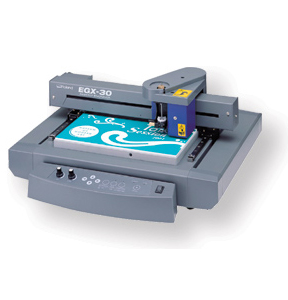|
|
| Line 10: |
Line 10: |
| [[Category:Secondary]] | | [[Category:Secondary]] |
| [[Category:Bench Top Equipment]] | | [[Category:Bench Top Equipment]] |
| [[File:3Dprinter.png|400px|right]]
| |
| __TOC__
| |
|
| |
|
| |
| =====Description=====
| |
|
| |
| Most traditional manufacturing processes for single components is based on the removal ''(or subtraction)'' of materials for standrd bvar stockj for example ''(e.g. by drilling, milling or turning on a lathe for example)''. [https://en.wikipedia.org/wiki/3D_printing '''3D Printing'''] is the general term now used for '''Additive Manufacturing ''(AM)''''' which, by contrast, creates objects by a process of fusing together layers of material to build up a 3D product.
| |
|
| |
|
| |
| =====Features and Applications=====
| |
|
| |
| A variety of '''Additive Manufacturing''' techniques have been developed ''(e.g. [https://en.wikipedia.org/wiki/Stereolithography '''Stereolithography'''], [https://en.wikipedia.org/wiki/Direct_metal_laser_sintering '''Direct Metal Laser Sintering ''(DMLS)''''' and even [https://en.wikipedia.org/wiki/Construction_3D_printing '''Construction 3D Printing''' which prints buildings with concrete!)'' but the method most commonly available for schools and hobbyists is based on building up a model from layers of a plastics filament and fusing them together ''(i.e. [https://en.wikipedia.org/wiki/Fused_deposition_modeling '''Fused Deposition Modeling''')'' in which a coil of plastics ‘wire’ is fed through a computer controlled heated nozzle.
| |
|
| |
| ----
| |
| <span style="color: green">'''Note:'''
| |
| Although school use of 3D printing may be limited to plastics and similar materials, models created in wax can then be used in a '''[[Lost Wax Casting]]''' process to create protoypes in metals such as Aluminium and various Zinc based alloys ''(e.g. Kayem or Mazac)''.
| |
| </span>
| |
| ----
| |
|
| |
| '''[[Injection Moulding]]''' can be less expensive when manufacturing large quantities of plastics products, but Additive Manufacturing is generally more flexible and less expensive when producing relatively small quantities or single protoypes - hence the alternative name of '''Rapid Prototyping'''.
| |
|
| |
|
| |
| {{CNC Equipment Buyers Guide}}
| |
|
| |
| [[Category:Computer Controlled Equipment]] | | [[Category:Computer Controlled Equipment]] |
Revision as of 11:36, 13 August 2016
Engraving is the practice of incising a design on to a hard, usually flat surface, by cutting grooves into it.
Traditionally it was a hand process using small cutting tools called Burin and was how copper printing plates used to be made. Hand engraving is still used today by artist/craftsmen but most is now done using a CNC engraving machine.
CNC Engravers can be used as a mini-router or milling machine for small scale work in acrylic, close-grained timbers, manufactured boards, or softer metals. Models are available specifically designed for engraving electronic circuits using copper-clad board and some have a limited 3D capability.
